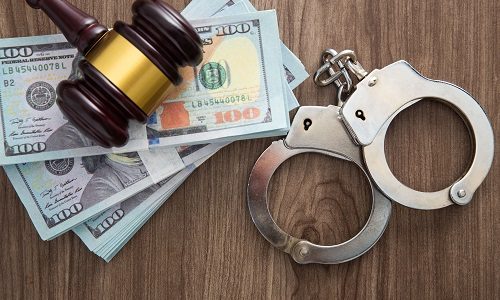What is Money Laundering?
Money laundering is an illegal process of generating vast amounts of money made through criminal activity. This includes terrorist funding or drug trafficking, which majorly comes through a legitimate source. The money generated through criminal activity is regarded as dirty, and the process “launders” it to make it appear clean.
It is a serious financial crime that is used by street-level or even white-collar criminals alike. Today most financial institutions have anti-money laundering (AML) rules to identify and prevent this activity.
How Money Laundering Functions
Money laundering is crucial for criminal companies who wish to use illegally acquired money efficiently. Managing such huge amounts of illegal cash is dangerous and inefficient. Criminals demand a technique to deposit money in legitimate financial companies. Yet they can only do so if it appears to come from legitimate sources.
Stages of Money Laundering
The money laundering process typically includes three steps. Namely, placement, layering, and integration. Let’s dive into each of these steps.
- The placement stage: The placement of illegal funds into the financial unit can occur directly or indirectly. The most common technique used in the placement stage is to segregate ample amounts of cash into less suspicious smaller amounts which can be submitted into a single bank account or various bank accounts. Other techniques used to carry out placement include:
- False invoicing (over-invoicing and pseudo-invoicing for payment of non-existing goods and services)
- Mixing illegal money with legitimate money
- Buying insurance or securities with cash
- Buying foreign currency
- Betting on and gambling on sports events
- The layering stage: It is the process of segregating illicit money from its source and designing layers of transactions to confuse an audit. The objective is to hide the source of illegally acquired money and other assets. This stage is highly complex as it includes several transactions often involving international money transfers.
For the objective of layering, money can be shifted via the sales and purchases of investments or a series of accounts at banks in several nations. Commonly, such funds are directed to jurisdictions that have loose AML regulations or do not cooperate with AML investigations. Common examples include:
- Reselling high-value goods
- Chain-hopping (converting one cryptocurrency to another, and also shifting crypto from one blockchain to another)
- Investing in real estate
- Transferring funds between countries
- The integration stage: After this, criminals consolidate or return- illicit money to themselves in a manner that appears to be clean. If the integration stage is successful, the funds become part of the legitimate financial unit and can be used freely.
The focus at this stage is to integrate the money without seeking the attention of law enforcement. It is done through activities like purchasing jewelry, property, luxury automobiles, and art.
It is significant to notice that the three stages: placement, layering, and integration can occur separately, simultaneously, or in an overlapping manner.
Detection and Prevention of Money Laundering
To keep your company safe, a thorough Anti-money laundering (AML) compliance program should be implemented. It must determine how the business detects, assesses, and reports financial crimes. This includes the following measures:
-
- Customer Due Diligence (CDD): Before a user is enabled to use the service, they should go through a Customer Due Diligence check. It includes attaining the user’s data to verify their identity and analyze whether they are part of any crime.
- Enhanced Due Diligence (EDD): In conditions like higher money laundering risk, industries use the measures like Enhanced Due Diligence. Checking upon the client’s source of funds to ensure that they are not supported by any illegal activity is one of the significant elements of EDD.
- Ongoing Customer Monitoring: It is an extra layer of risk management that includes ongoing due diligence checks on users and scrutiny of their transactions.
- Independent AML Audits: These enable companies to identify failures and deficiencies in their AML techniques and correct any issues before regulatory inspections to avoid any fines.
- Transaction monitoring or KYT: It is an ongoing security procedure that helps to detect suspicious transactions. A dependable KYT tool identified unconventional patterns and reviews dubious transactions and transfers made in flat or digital currencies.
Implementing these simple practices will protect your company from criminals while keeping regulators away.
Conclusion
Money laundering is a serious crime with far-reaching consequences. It undermines the integrity of financial systems, facilitates other criminal activities, and hinders economic development. Continued efforts to combat money laundering through robust legislation, international cooperation, and the use of advanced technologies are necessary to protect the global financial system and promote a safer, more transparent, and equitable society.

